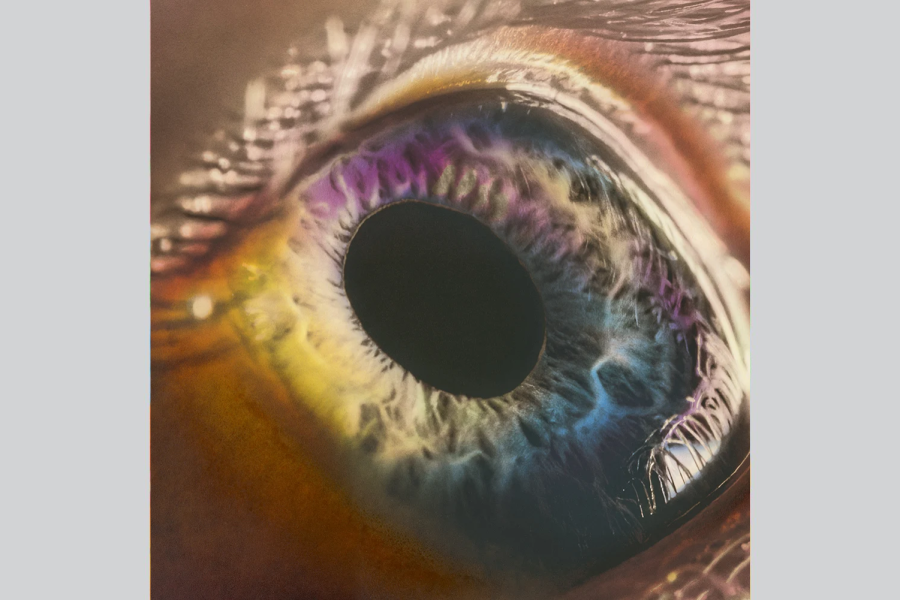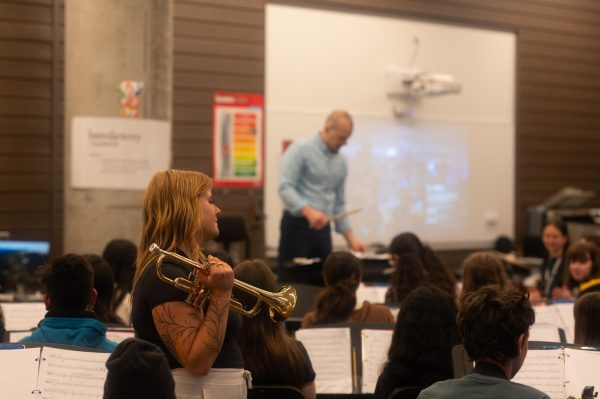Arcade Fire’s ‘We’ delivers a unique, diverse musical journey
We
“We” is the Canadian indie-rock band’s first album since 2017. Following the release, Arcade Fire are embarking on their first world tour in four years, and will come to the United Center Nov. 12.
May 23, 2022
At the end of “The Lightning I,” around halfway through the album, the piano slowly drives vocalists Win Butler and Régine Chassagne to what seems to be the end of the song. As it reaches its crescendo, however, the song drops a ‘One-two-three-four” and launches into a classic rock power anthem, shaping an entirely new tone for the rest of the album. Arcade Fire’s new album “We” presents an absorbing musical journey but one that can only be fully appreciated by actively listening to it.
The earlier songs immediately establish a restless, almost uncomfortable, mood. The consistent backing beat of “Age of Anxiety I,” along with the overlaid heavy breaths manage to evoke a feeling of stress, while the somewhat absurd lyrics of “Age of Anxiety II” — for example, “Rabbit Hole/Plastic Soul” or “Hardy har har/Chinese throwing star” — create an almost otherworldly experience. The strange, uneasy tone of these songs is only enhanced by their techno-style instrumentals. This trend is continued in songs “End of the Empire I-IV,” which appears to detail the lives of survivors on a post-apocalyptic Earth. Impressively, despite the fact that these song anthologies are each around 10 minutes long, there are enough sections with different instrumental styles and different tempos that they don’t drag on. Still, the tension and restless tone mean that these are not songs to listen to while doing homework or relaxing on the couch. They may not be for everyone, but if one tries to actively listen to this segment, they will be rewarded with what is definitely a unique musical experience.
Near the midpoint of the album, the listener’s expectations for the rest of the album are blown out of the water with “The Lightning II,” however. The resounding guitar-led piece releases the tension that had been building for the past 20 minutes in a satisfying, upbeat manner. The song finally plants a seed of hope for the rest of the album, asking “What will the light bring?” This new tone is carried on through the rest of the album, such as in the acoustic, reassuring, “Unconditional I” and “Unconditional II,” an electric love ballad. Finally, the album closes out with the title track, “We,” a slow, calming descent from the frenetic heights of the middle of the album. While these songs are more likely to be appealing to the casual listener than the first few, most are still so lively and energetic that one can’t just passively listen to them — it’s hard to resist tapping your feet or singing along in your head.
When looking at the songs individually, there are some standouts. “Age of Anxiety I” and “The Lightning II” have undeniably singable choruses, while “Age of Anxiety II” and “Unconditional I” excel in their compelling lyricism. There are no objectionable tracks on the album. However, listening to these songs alone loses a lot of the storytelling power that they hold. Listening to an upbeat song from the second half of the album alone doesn’t have the satisfaction of doing it after making it through the eerie bleakness of the first half, for example.
Arcade Fire’s “We” can take the listener through the spectrum of musical emotion, but they need to fully immerse themselves in the world of the songs to experience the best of it.



















Lucas Caldentey • May 24, 2022 at 8:23 am
I love Arcade!!